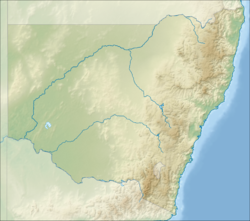Kings Beach Significance as a Queer Space
Kings Beach has a long history as a space used by LGBTQIA+ communities. [7] It is recognised as one of Australia's queer spaces and a rare example of a public gathering site for LGBTQIA+ people in a regional setting. [8] The beach has never been officially classified as a clothing optional beach, however has been used as nude bathing beach since the 1930s. [9]
Reports of nude bathing in the Broken Head area date back to 1934, when Byron Shire Council noted public concern over nudity and lack of control at the Beach. [9] Kings Beach began attracting LGBTQIA+ people from the early 1970s, [10] at a time when homosexuality remained criminalised in New South Wales [11] .Publications such as Outrage (1984) [12] and Campaign Australia (1987) [13] referenced Kings Beach as a known site for gay nudists.
During the 1980s and 1990s, during the HIV/AIDS crisis, the Beach became a site for memorials, ash scatterings, and quiet reflection for those grieving lost partners and friends. [7] Informal parties and gatherings were held at the Beach in conjunction with Tropical Fruits parties in Lismore, or marked milestones like the summer solstice and New Year’s Day. [14]
In the early 2000s, The Pink Guide listed Kings Beach as a prominent destination for Queer travellers, likening it to LGBTQIA+ naturist spaces such as Hanlan’s Point in Toronto and Black’s Beach in San Diego. [15]
Controversy over usage
In the 1980s, local police adopted a largely tolerant stance toward nude bathing at Kings Beach. A 1989 Byron News article noted that officers encouraged nudists to frequent Kings Beach over more populated Byron Bay beaches. [16] [17]
In 2011, a request for lifesaving equipment at the beach was allegedly denied by NPWS, with critics citing possible homophobia due to the Beach’s Queer association. [18] The equipment was installed the following year after public outcry. [19]
In 2013, NPWS proposed closing the Kings Beach carpark, a move many interpreted as an attempt to restrict queer use of the space. An online petition and local advocacy reversed the decision. [20]
Following the closure of nearby Tyagarah Beach as a clothing-optional site in 2024. [21] , NPWS began increased enforcement against nudity at Kings Beach. [22] Signs were erected and formal statements clarified that while Kings remained welcoming to the LGBTQIA+ community, it was no longer a designated clothing-optional area. [23] These measures were met with community backlash, with critics calling for formal recognition of the beach’s queer heritage and inclusion in NPWS planning documents. [8]
A 2025 NPWS consultation titled No More Beating Around the Bush invited feedback from the Queer community about clothing optional enforcements. [7] Participants voiced concerns over the erasure of Queer history by the NPWS. [7]
In 2025, a formal nomination was submitted to include Kings Beach on the NSW State Heritage Registe r, under the Heritage Act 1977. [7] Advocates argued that the beach represents a rare and valuable cultural site for the LGBTQIA+ community in regional Australia, serving as a public space of safety, identity, and celebration over several decades. [7] This nomination was rejected in May 2025. [24]


